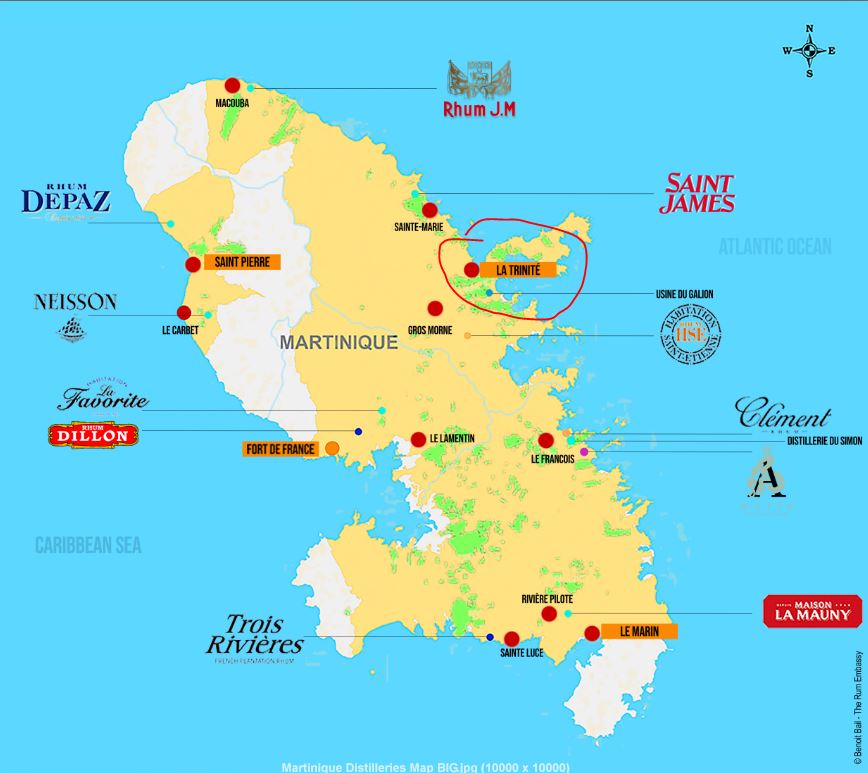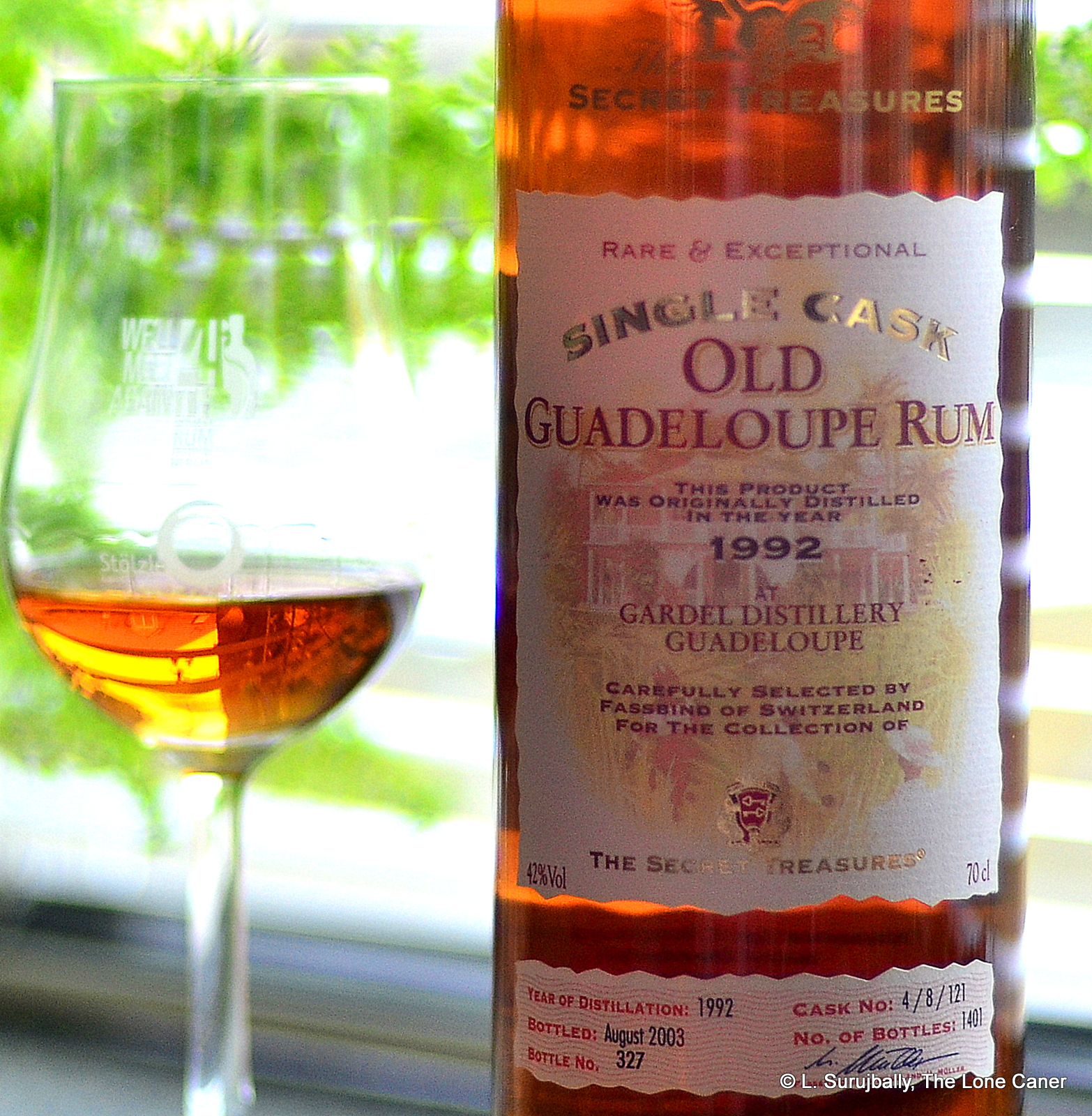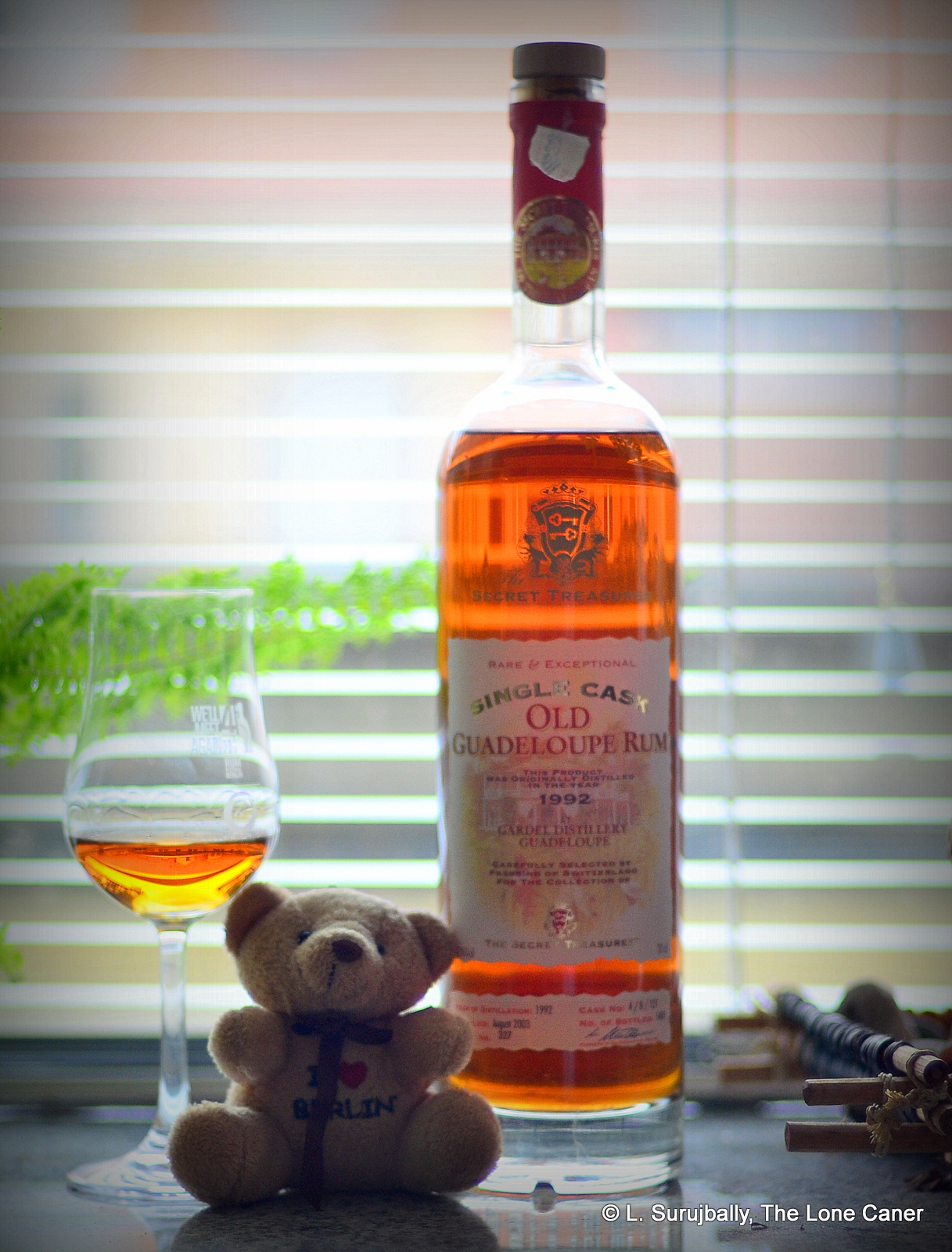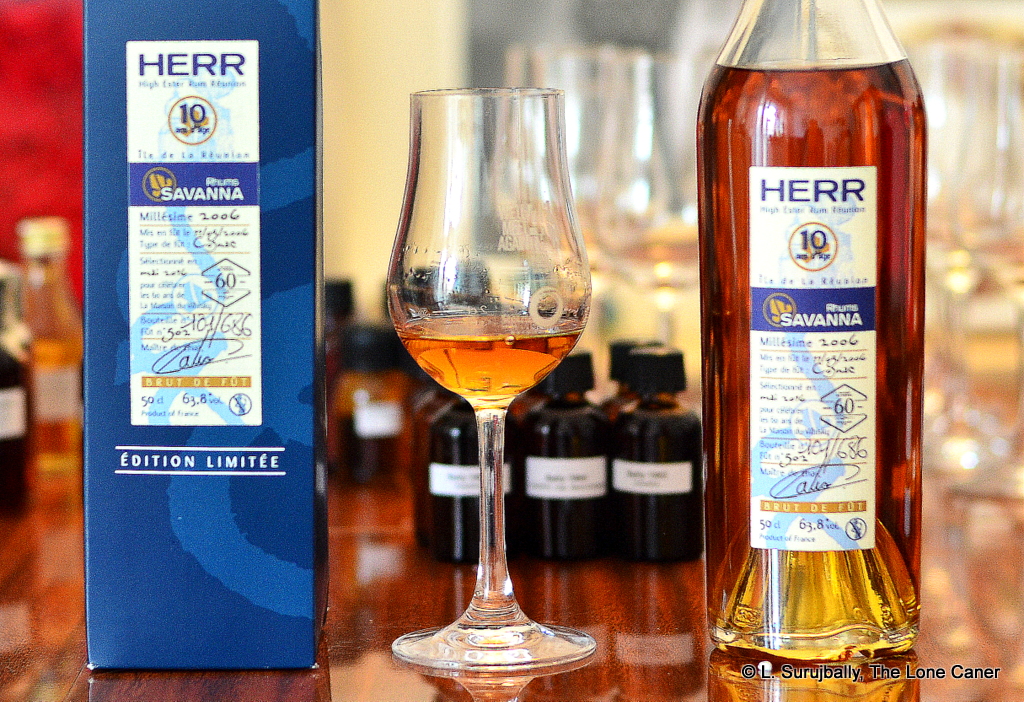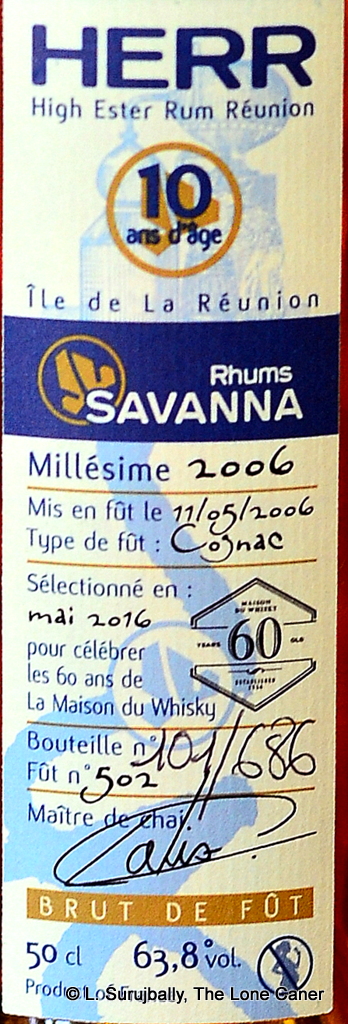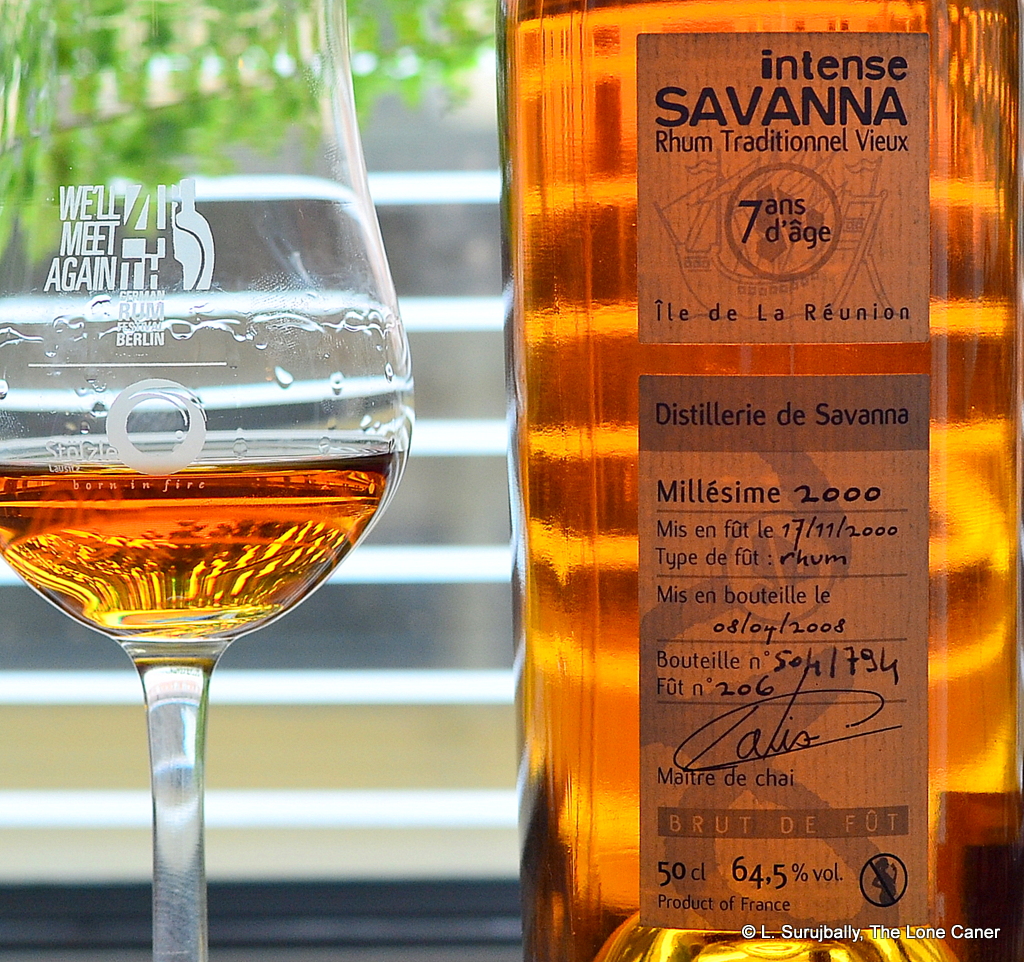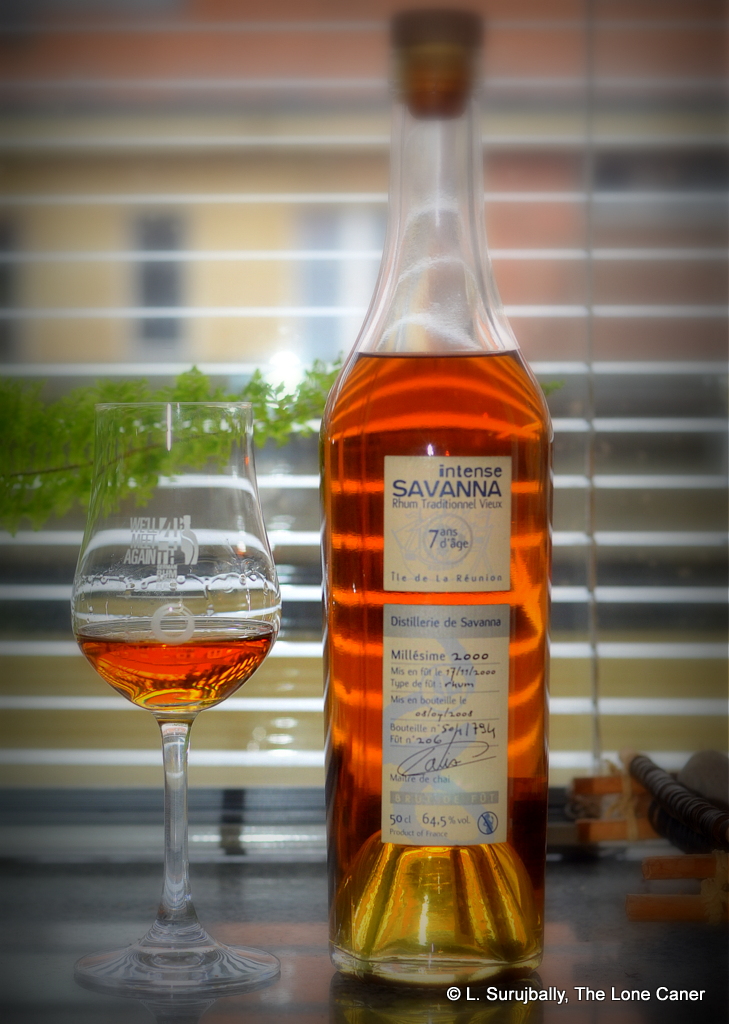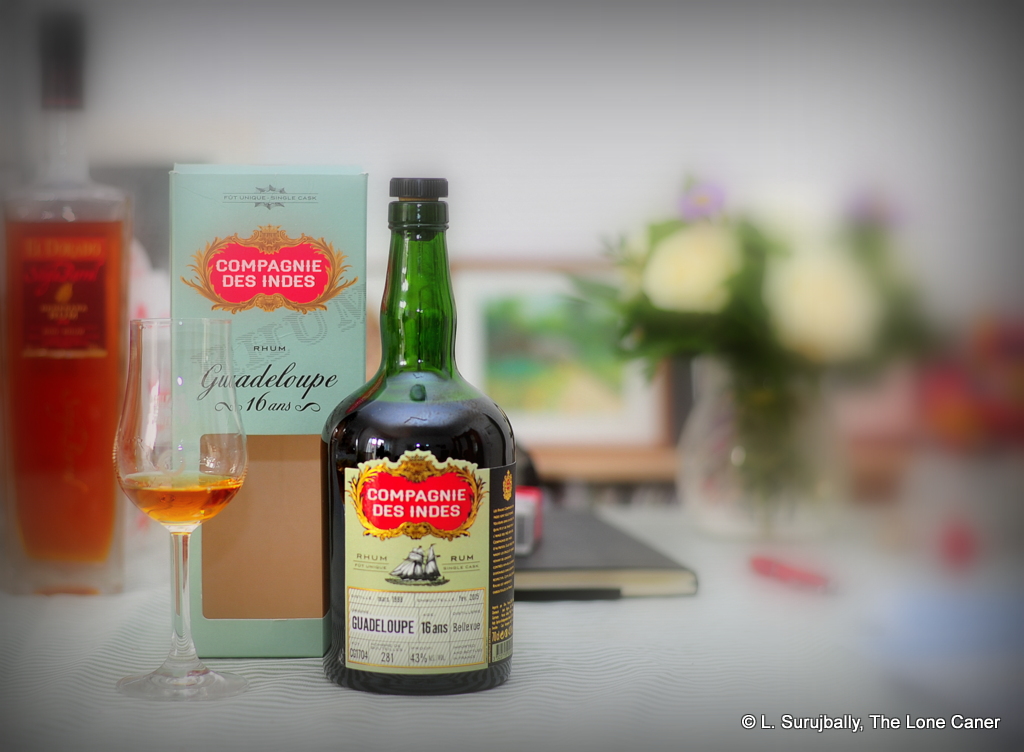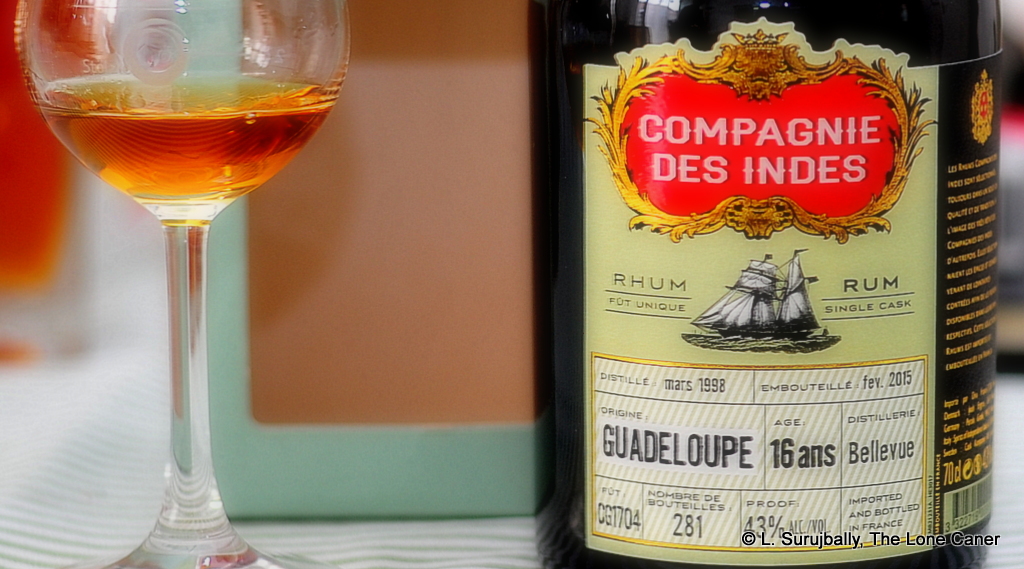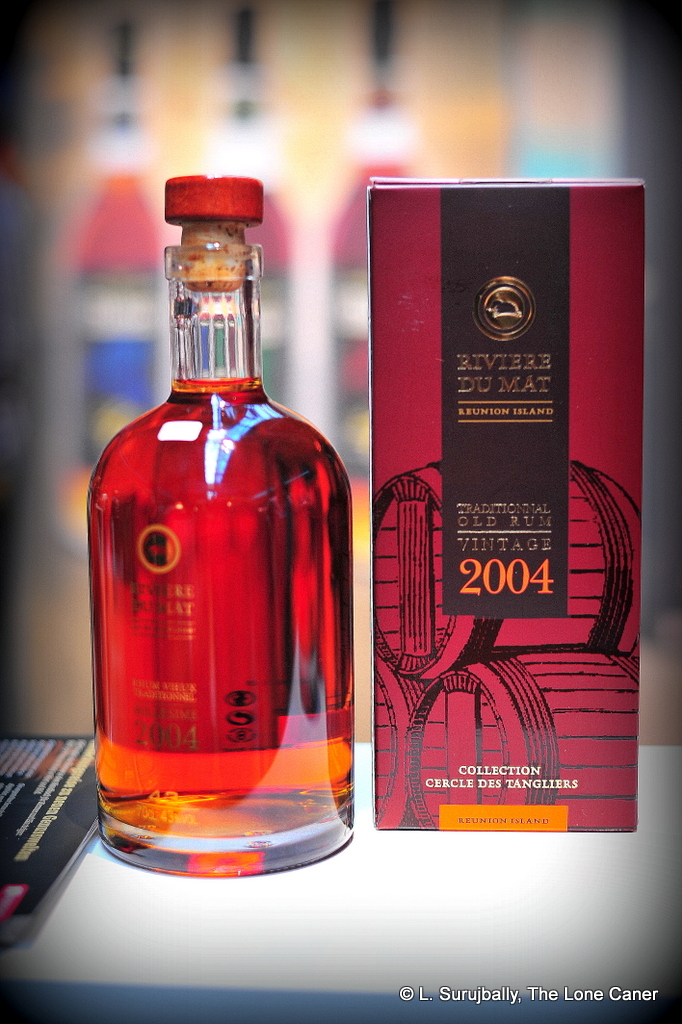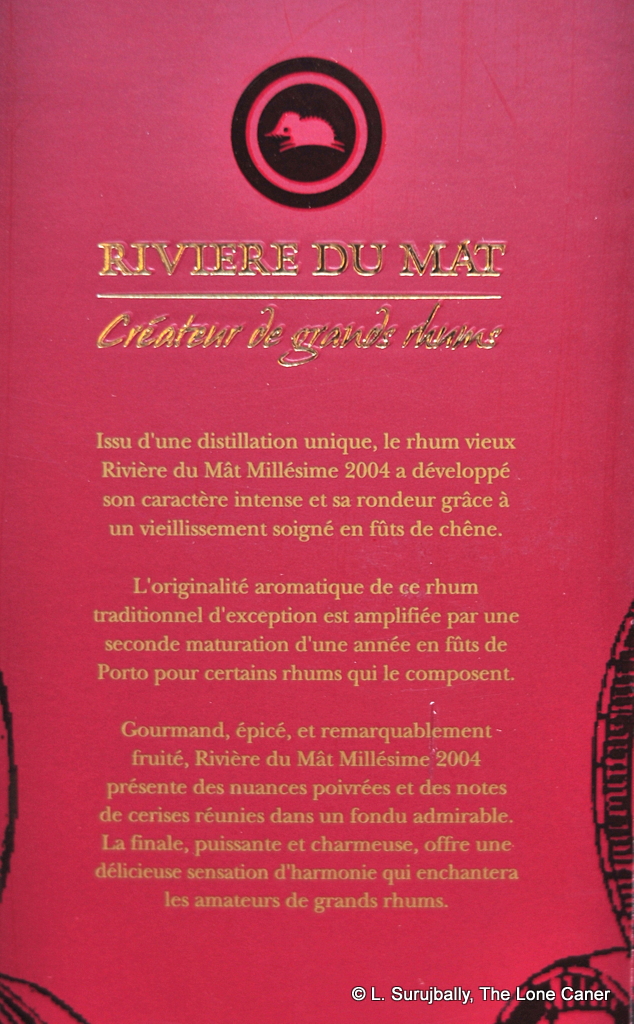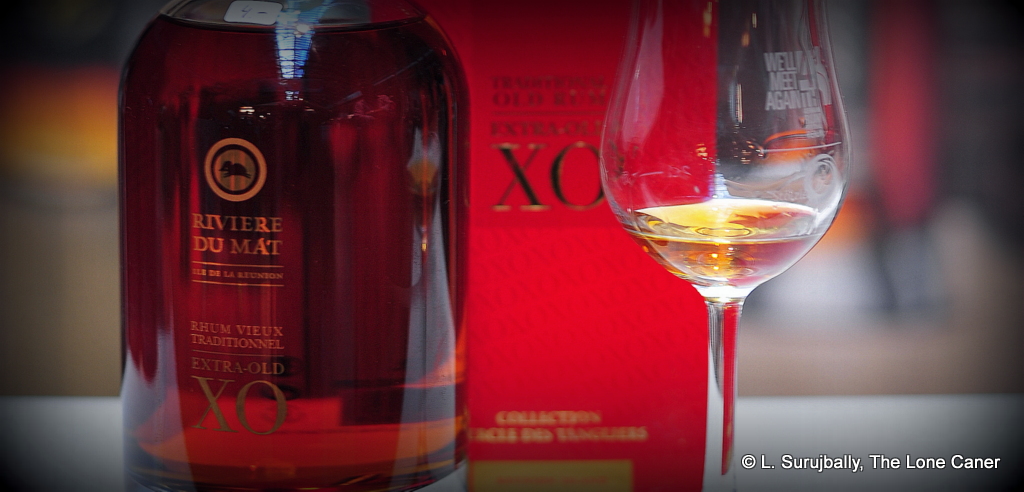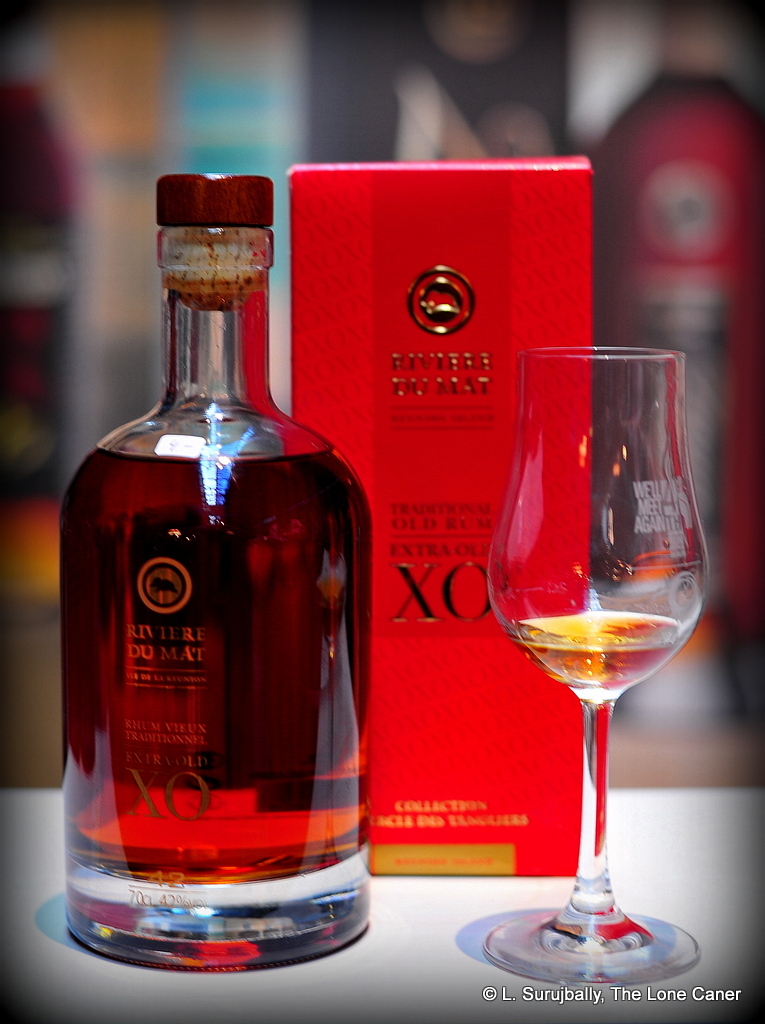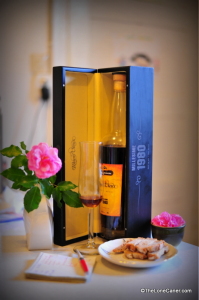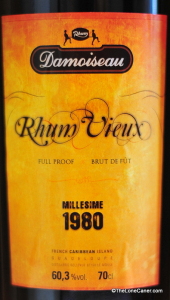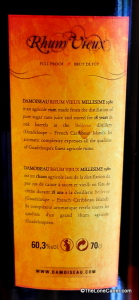Aside from their premium “Wild Series” line of rums with their striking black and white labels and dizzying proof points, the relatively new Danish indie Rom Deluxe also has various downmarket rum offerings. One step down from “Wild” is the Collector’s Series, originally meant to capture rums that were not quite as strong as the former but retaining much of the quality. On the face of it and perusing the listings, I don’t honestly see much difference, however, aside perhaps in a lower price.
The subject of today’s review is the first batch of Release 3 which hails from Bellevue, which can lead to some confusion since there are three places (maybe more) with that rather common name — suffice to say it’s from Le Moule on Guadeloupe, and made by Damoiseau (see “other notes”, below). Unusually for the French islands, it’s a molasses based rum, column still, distilled in 1998 and bottled in 2021 — and so aged a whopping 23 years in a combination of both tropical and continental — at a solid 55.5% (another batch has a slightly higher proof point of 56.1%). Stats like that have the nerd brigade crossing their eyes and drooling, and not just in Denmark; with good reason, since we see such ageing from French island rums only rarely.
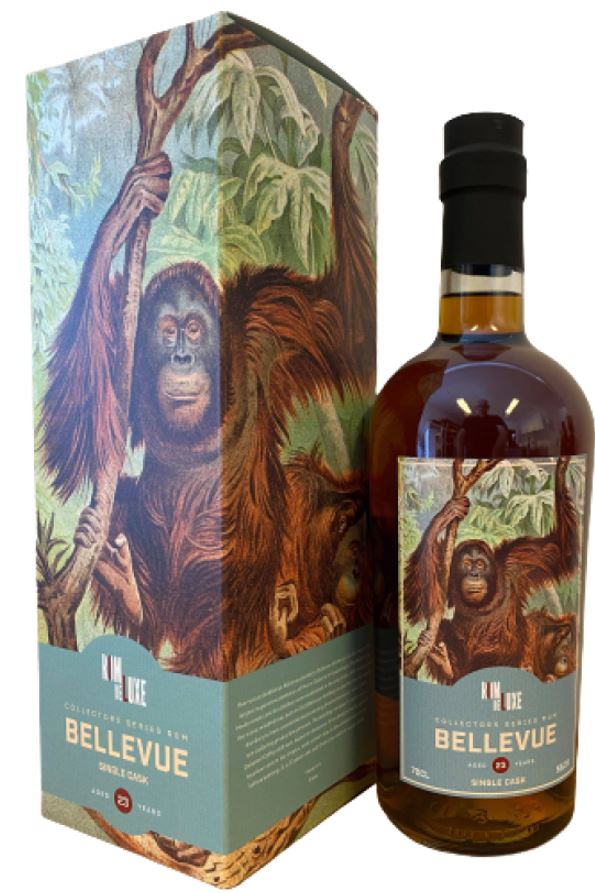 The rum, fortunately, did not disappoint. The nose was middle-of-the-road complex, a Goldilocks-level symphony of just about enough, never too much and rarely too little. The nose was slightly briny, but not a Sajous level-salt wax explosion. It had fruits, but was not an ester-bomb – peaches, apples, melons, apricots, flambeed bananas. A little smoke, a little wood, noting overbearing, and all these notes were balanced off with a pleasant melange of breakfast spices, cinnamon, vanilla, caramel and a touch of licorice.
The rum, fortunately, did not disappoint. The nose was middle-of-the-road complex, a Goldilocks-level symphony of just about enough, never too much and rarely too little. The nose was slightly briny, but not a Sajous level-salt wax explosion. It had fruits, but was not an ester-bomb – peaches, apples, melons, apricots, flambeed bananas. A little smoke, a little wood, noting overbearing, and all these notes were balanced off with a pleasant melange of breakfast spices, cinnamon, vanilla, caramel and a touch of licorice.
The palate settled down a bit and continued to channel an approach that eschewed the screeching sharp vulgarity of a fishwife’s flensing knife and went with something more moderate. There was salt caramel ice cream in Irish coffee, topped with whipped cream. Vanilla and brine, stewed apples, green peas, light pineapples, peaches in syrup. Things got a little odd somewhere in the middle of all this when distinct notes of wet ashes, rubber and iodine came out. These however, didn’t stick around long and gave way to a dry, short, crisp finish redolent of strong hot black tea (sweetened with condensed milk), acetones, nail polish, brine and a last filip of toffee.
The whole rum, the entire sipping and drinking experience, really was very good. I like to think it channelled that school of thought propounded by Hesiod and Plautus (among many others) who promoted moderation in all things (“…including moderation,” quipped Oscar Wilde centuries later). It’s tasty without overdoing it, it’s firm without bombast, assertive where needed, one of the better rums coming off the island, and honestly, one can only wonder what made Rom Deluxe relegate a rum like this to the Collector’s Series and not to the more upmarket Wilds.
No matter. Whatever category it’s placed in, it’s really worth checking out of it ever turns up in your vicinity. I doubt you’d be disappointed.
(#910)(86/100) ⭐⭐⭐⭐
Other notes
- Outturn 258 bottles
- Marque GMBV
- The label and the stats are the same on both the 55.5% R3.1 and the 56.1% R3.2, except for the strength.
- The rum is not an agricole, given it was made from molasses; this twigged a lot of people into believing it was not from MG BEllevue…but from Damoiseau (see next comment)
- Note on origins: Originally this review mentioned Bellevue as being “…on the small island of Marie Galante just south of Guadeloupe (other distilleries there are Pere Labat and Velier/Capovilla at Poisson, and Bielle).” However, several people alerted me to overlooked inconsistencies here, because there is Bellevue on Marie Galante, another Bellevue at Le Moule in Guadeloupe (that’s Damoiseau’s place) and a third in Sainte Rose, also in Guadeloupe (which is Reimonenq). Because such confusions had arisen before (e.g. the TBRC 1999 Bellevue) most commentators felt it was a Damoiseau rum. I got onto Kim Pedersen at Rom Deluxe and he wrote back “…you are right about the misprint on our website. It is a Bellevue from Damoiseau
 […] there has been a lot of confusion about these rums, and I can see that my text on the webpage is more misleading than informative. So I think I have to change that despite the bottles is sold out.” So that means the review’s “sources” paragraph, and my title has been changed.
[…] there has been a lot of confusion about these rums, and I can see that my text on the webpage is more misleading than informative. So I think I have to change that despite the bottles is sold out.” So that means the review’s “sources” paragraph, and my title has been changed.
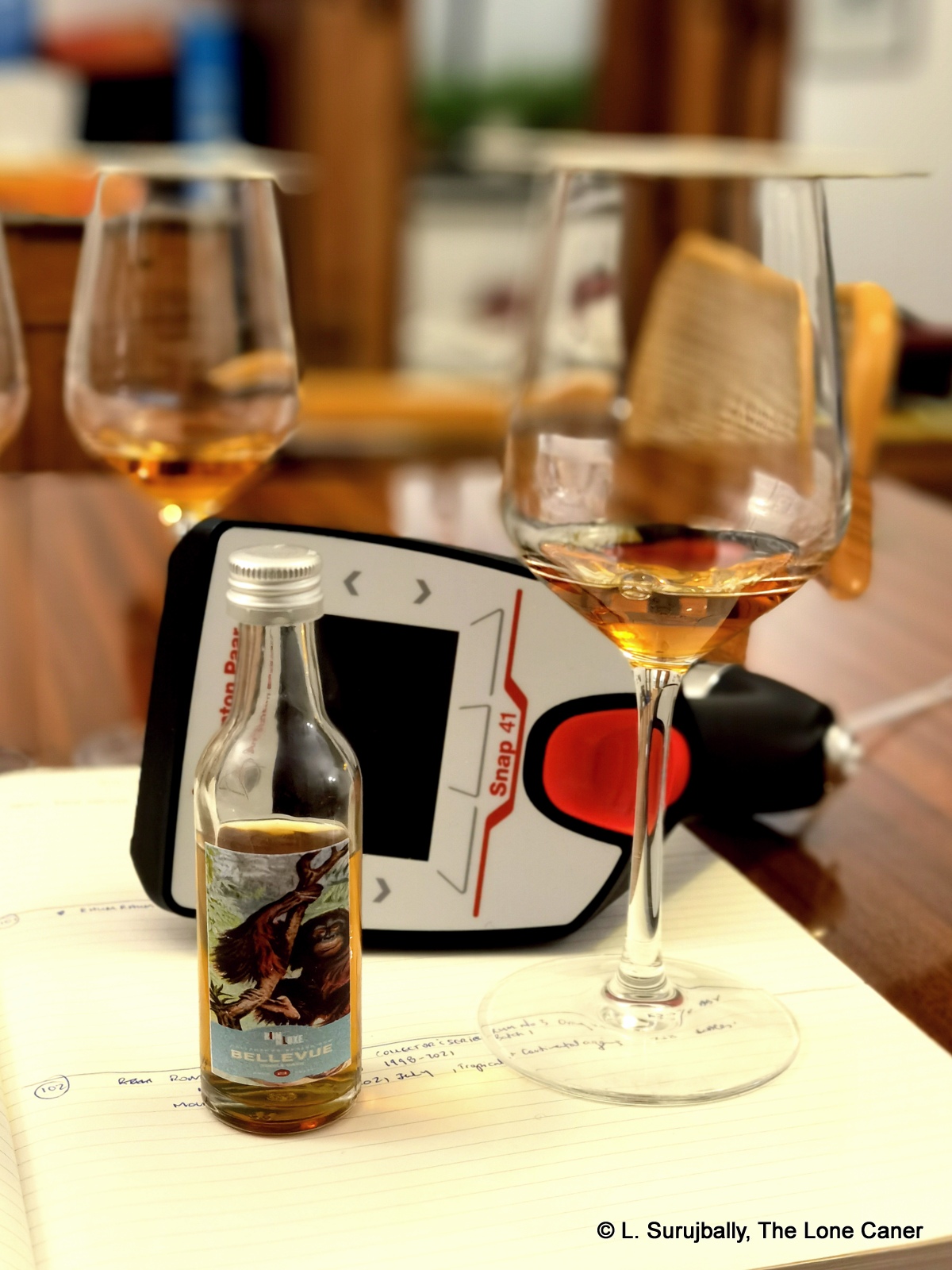

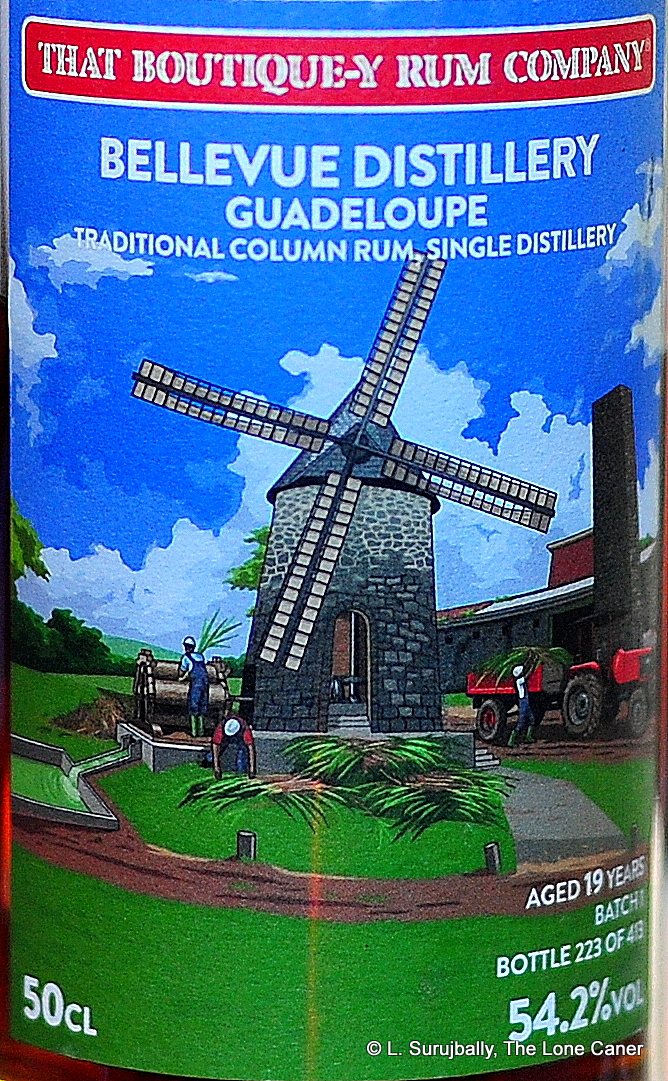 Take this one, which proves that TBRC has a knack for ferreting out good barrels. It’s not often you find a rum that is from the French West Indies aged beyond ten years — Neisson’s been making a splash recently with its 18 YO, you might recall, for that precise reason. To find one that’s a year older from Guadeloupe in the same year is quite a prize and I’ll just mention it’s 54.2%, aged seven years in Guadeloupe and a further twelve in the UK, and outturn is 413 bottles. On stats alone it’s the sort of thing that makes my glass twitch.
Take this one, which proves that TBRC has a knack for ferreting out good barrels. It’s not often you find a rum that is from the French West Indies aged beyond ten years — Neisson’s been making a splash recently with its 18 YO, you might recall, for that precise reason. To find one that’s a year older from Guadeloupe in the same year is quite a prize and I’ll just mention it’s 54.2%, aged seven years in Guadeloupe and a further twelve in the UK, and outturn is 413 bottles. On stats alone it’s the sort of thing that makes my glass twitch.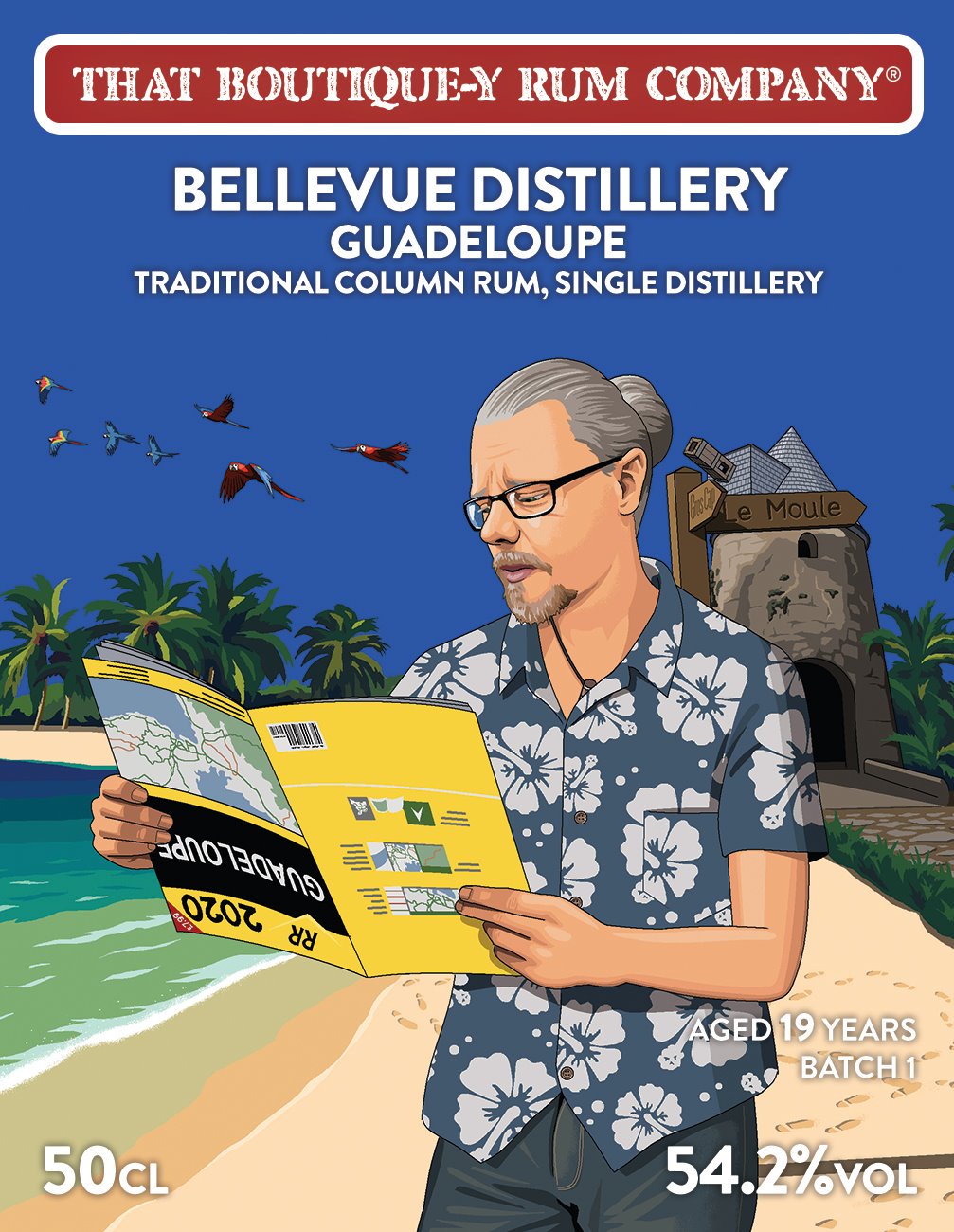 Guadeloupe rums in general lack something of the fierce and stern AOC specificity that so distinguishes Martinique, but they’re close in quality in their own way, they’re always good, and frankly, there’s something about the relative voluptuousness of a Guadeloupe rhum that I’ve always liked. Peter sold me on the quality of the
Guadeloupe rums in general lack something of the fierce and stern AOC specificity that so distinguishes Martinique, but they’re close in quality in their own way, they’re always good, and frankly, there’s something about the relative voluptuousness of a Guadeloupe rhum that I’ve always liked. Peter sold me on the quality of the 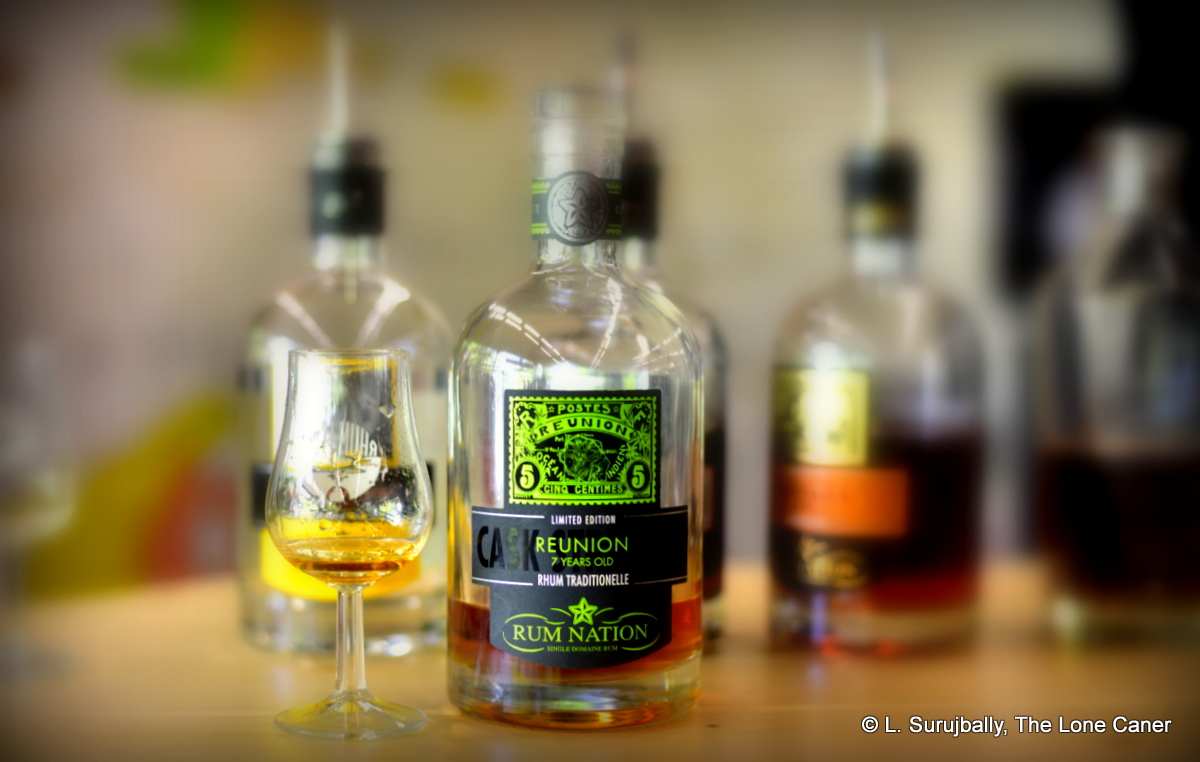
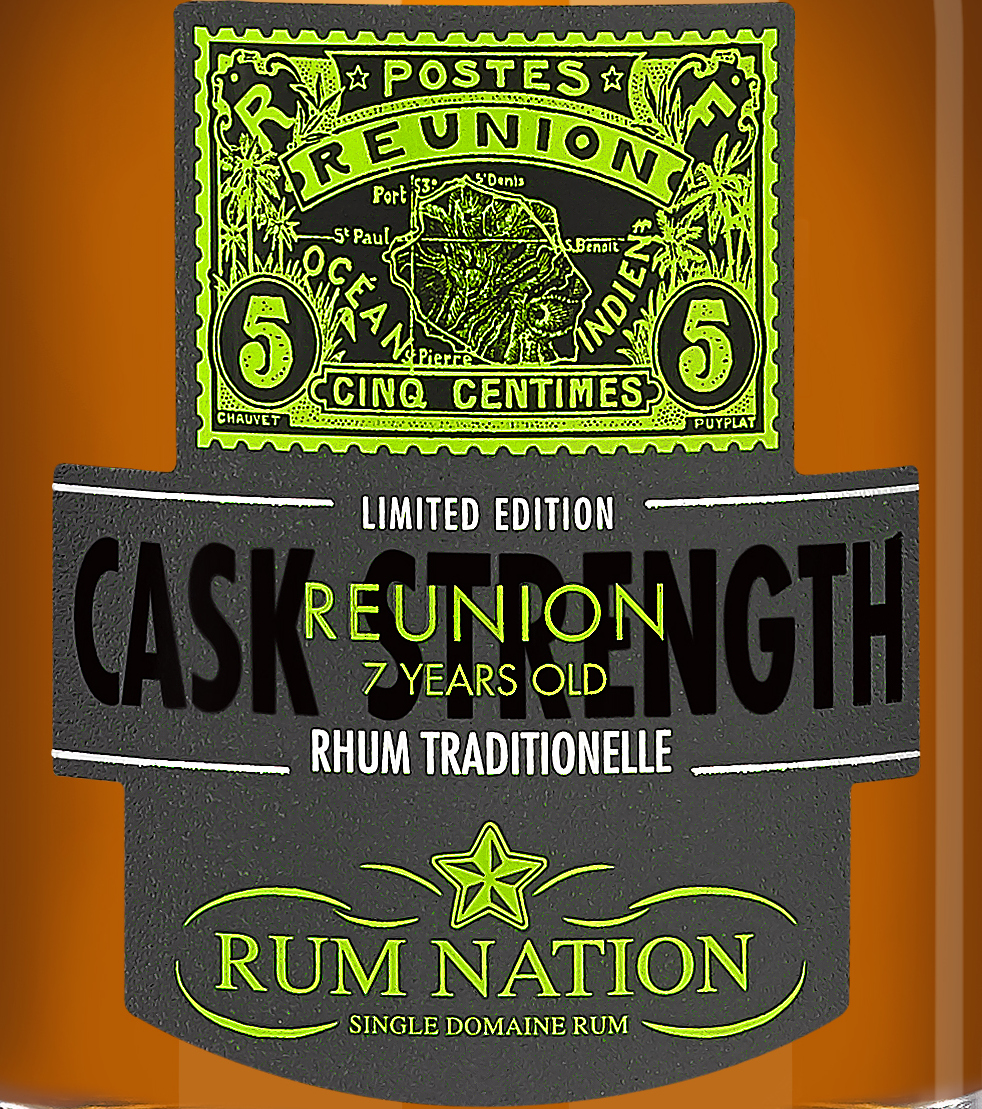
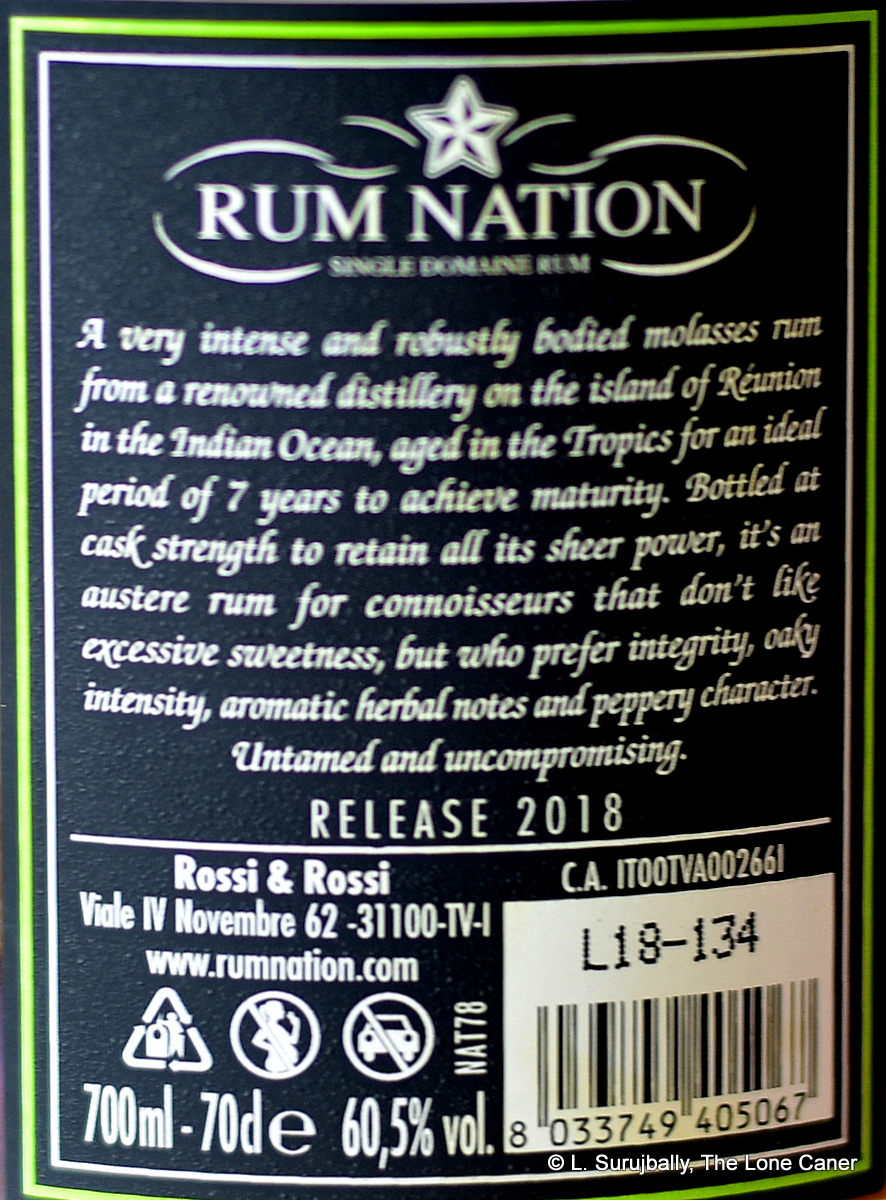 Some rums falter on the taste after opening up with a nose of uncommon quality – fortunately Rum Nation’s Réunion Cask Strength rum (to give it its full name) does not drop the ball. It’s sharp and crisp at the initial entry, mellowing out over time as one gets used to the fierce strength. It presents an interesting combination of fruitiness and muskiness and crispness, all at once – vanilla, lychee, apples, green grapes, mixing it up with ripe black cherries, yellow mangoes, lemongrass, leather, papaya; and behind all that is brine, olives, the earthy tang of a soya (easy on the vegetable soup), a twitch of wet cigarette tobacco (rather disgusting), bitter oak, and something vaguely medicinal. It’s something like a Hampden or WP, yet not — it’s too distinctively itself for that. It displays a musky tawniness, a very strong and sharp texture, with softer elements planing away the roughness of the initial attack. Somewhat over-oaked perhaps but somehow it all works really well, and the finish is similarly generous with what it provides — long and dry and spicy, with some caramel, stewed apples, green grapes, cider, balsamic vinegar, and a tannic bitterness of oak, barely contained (this may be the weakest point of the rum).
Some rums falter on the taste after opening up with a nose of uncommon quality – fortunately Rum Nation’s Réunion Cask Strength rum (to give it its full name) does not drop the ball. It’s sharp and crisp at the initial entry, mellowing out over time as one gets used to the fierce strength. It presents an interesting combination of fruitiness and muskiness and crispness, all at once – vanilla, lychee, apples, green grapes, mixing it up with ripe black cherries, yellow mangoes, lemongrass, leather, papaya; and behind all that is brine, olives, the earthy tang of a soya (easy on the vegetable soup), a twitch of wet cigarette tobacco (rather disgusting), bitter oak, and something vaguely medicinal. It’s something like a Hampden or WP, yet not — it’s too distinctively itself for that. It displays a musky tawniness, a very strong and sharp texture, with softer elements planing away the roughness of the initial attack. Somewhat over-oaked perhaps but somehow it all works really well, and the finish is similarly generous with what it provides — long and dry and spicy, with some caramel, stewed apples, green grapes, cider, balsamic vinegar, and a tannic bitterness of oak, barely contained (this may be the weakest point of the rum).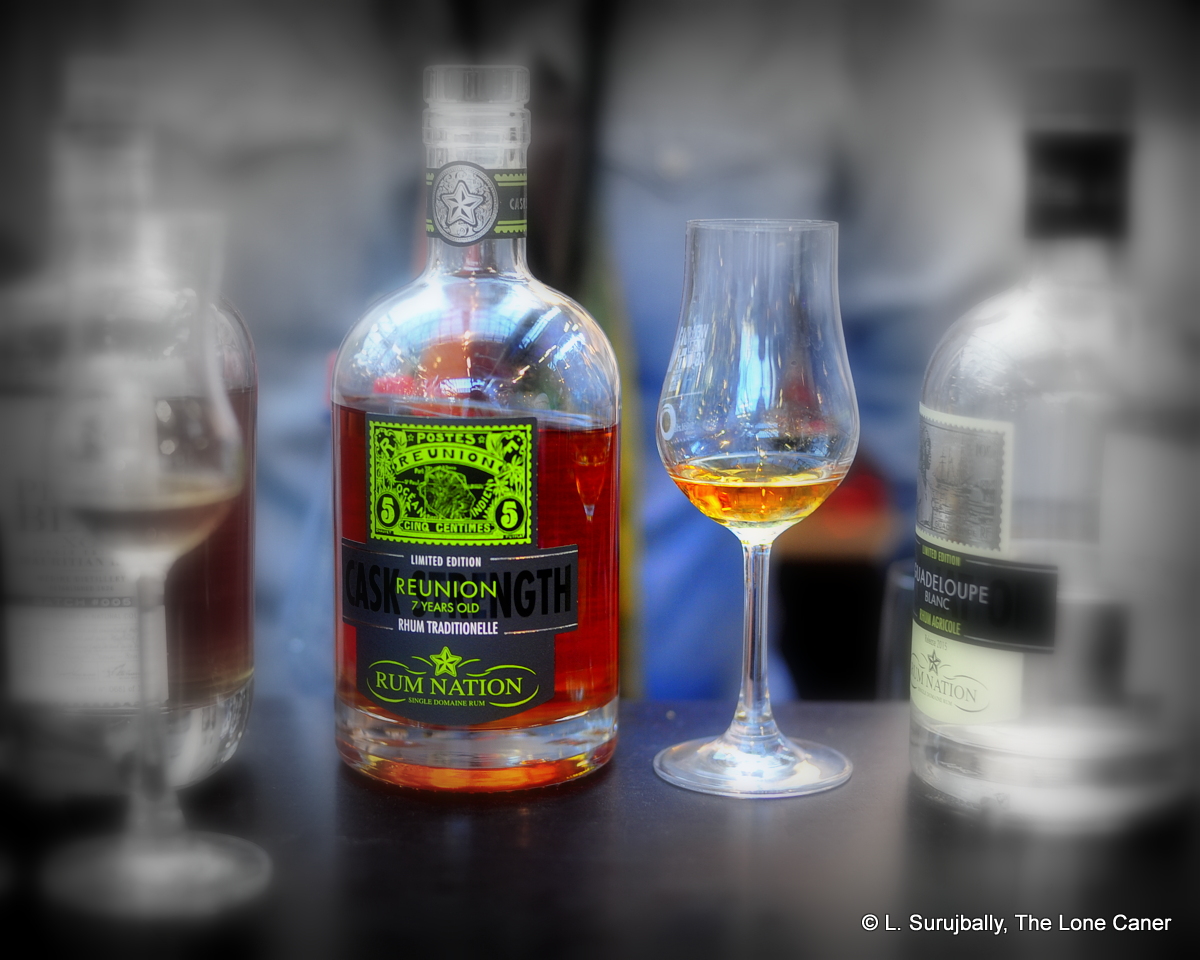
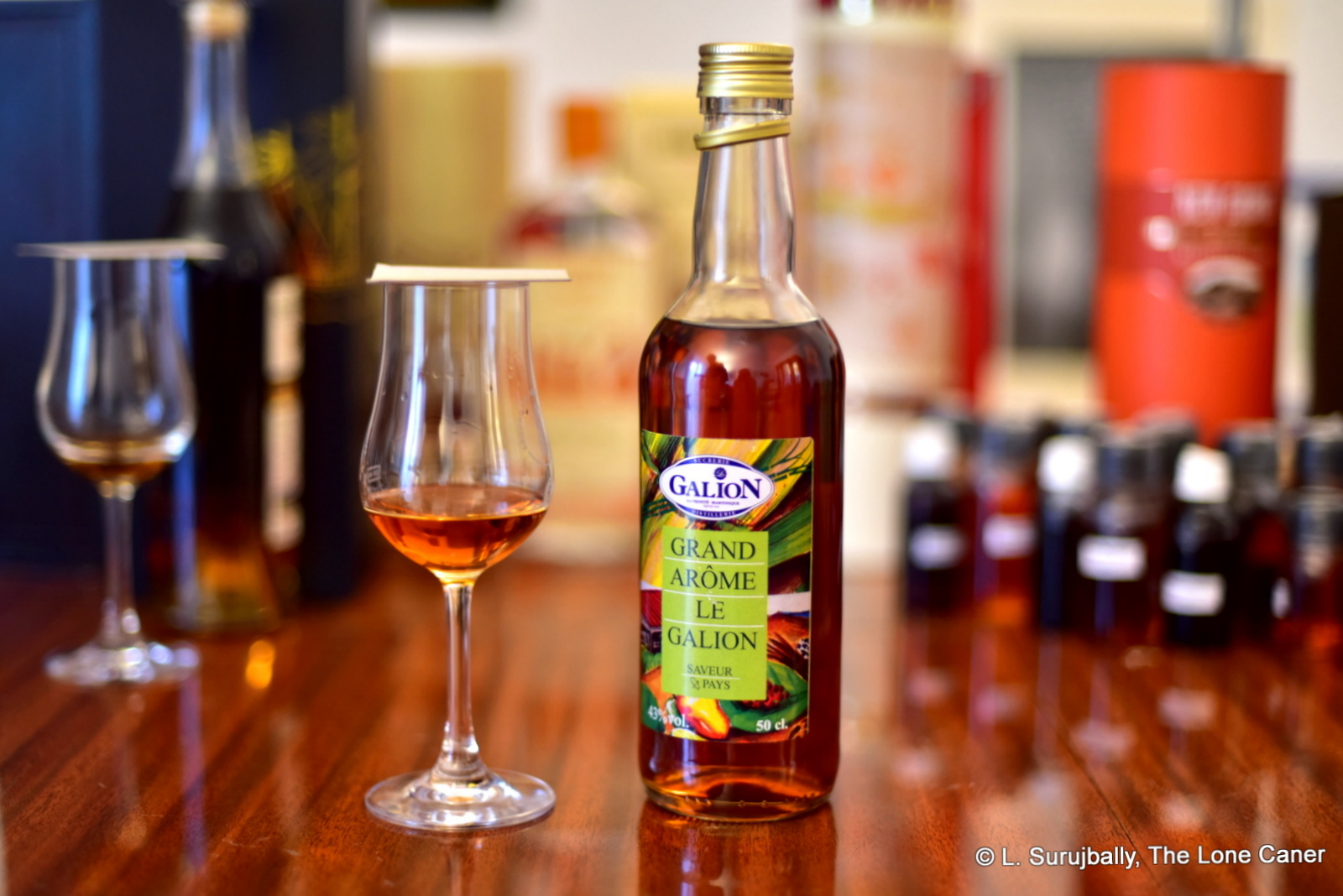
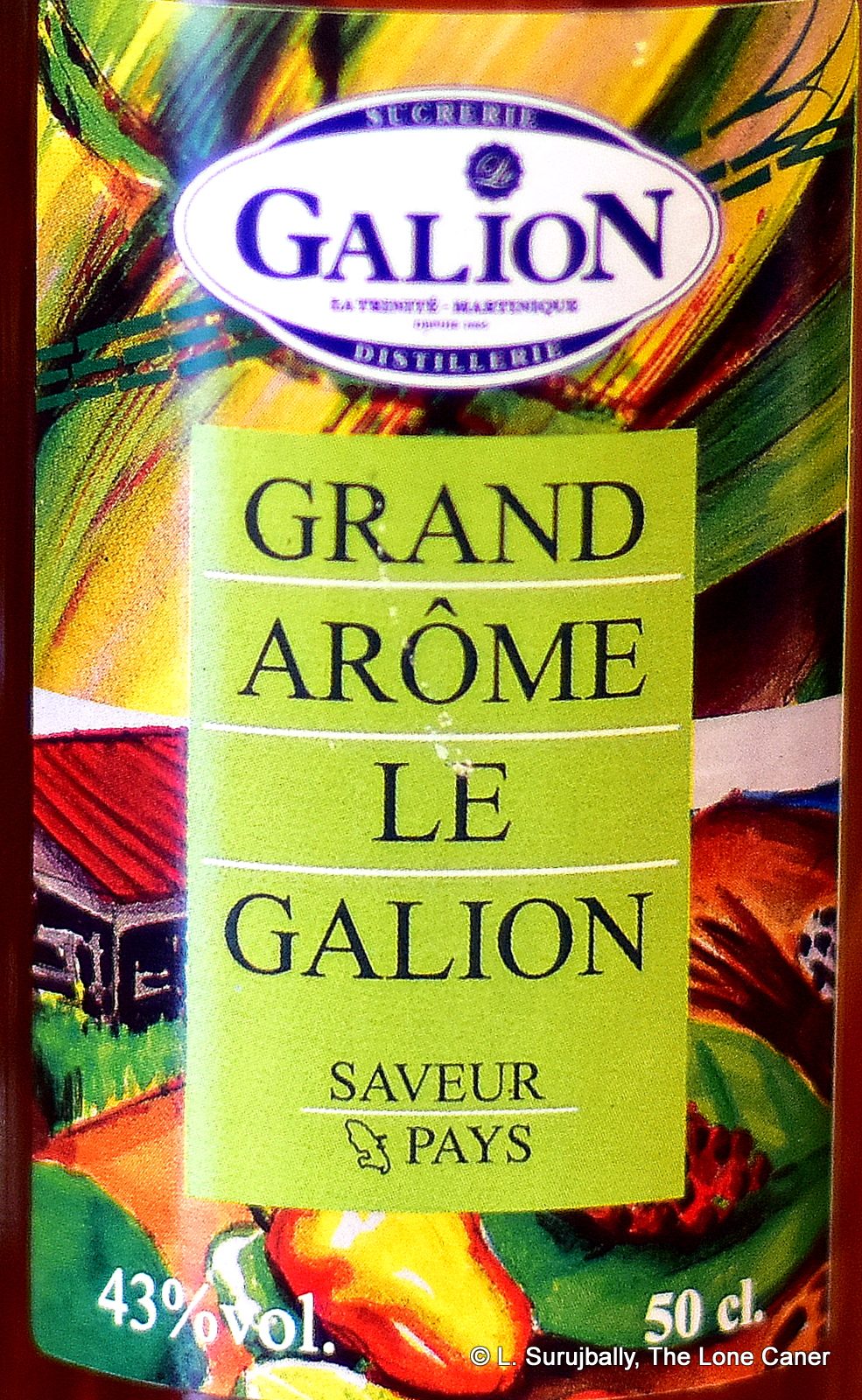 The pattern repeated itself as I tasted it, starting off sharp, uncouth, jagged, raw…and underneath all that was some real quality. There were caramel, salty cashews, marshmallows, brown sugar (
The pattern repeated itself as I tasted it, starting off sharp, uncouth, jagged, raw…and underneath all that was some real quality. There were caramel, salty cashews, marshmallows, brown sugar (